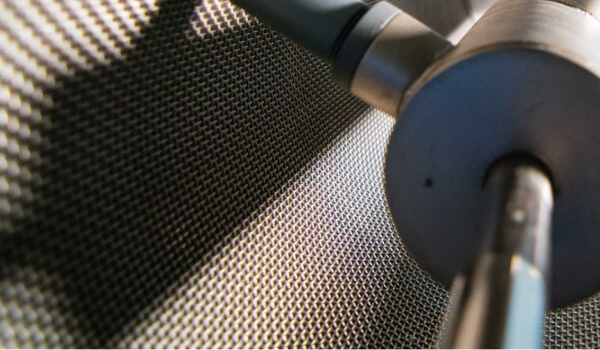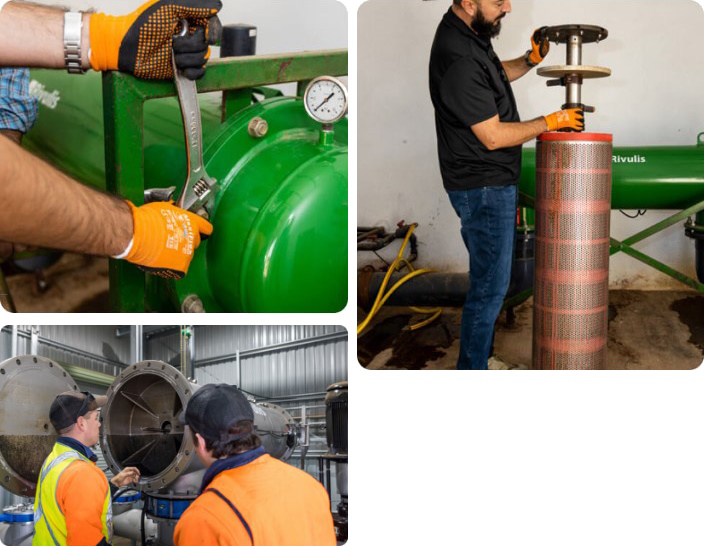Maintenance – automatic screen filters
With many moving parts, automatic screen filters require attention both during and after the season. The following advice pertains particularly for the Rivulis F3000 series of automatic filters.

If the pressure differential counter number is large compared to that of time, then the flushing interval time between two back-flushes must be reduced as the water quality will have deteriorated over time. It could be that silty run-off water has run into the dam or algae has bloomed in the water source.
During the cleaning process, the back-flush valve should maintain a set pressure differential across the cleaning and flushing chambers of the filter. This can be checked by moving the pressure gauge on the filter to the cleaning and flushing chamber ports. The difference between the two should be a minimum of 2.0 bar (30 psi).
During the season
Checks should be made with the controller to ensure that the filter is flushing via the time command sent by the controller. This can be identified by comparing the number of back-flushes performed by the controller based on time and pressure differential.
Pressing the enter button shows the number of flushes and the reason of flushing.
At the end of the season
Checks should be made with the controller to ensure that the filter is flushing via the time command sent by the controller. This can be identified by comparing the number of back-flushes performed by the controller based on time and pressure differential.
Before irrigation is shut down for the season, automatic screen filters should be back-flushed manually for two or three cycles. Performing this step will remove any impurities from the screen or settlement of contaminants on the screen.
Filters are supplied with an electronic pressure differential (PD) switch that manages the back-flush process if the pressure differential across the filter reaches a predetermined level. It’s built into the controller system, and for peace of mind, it displays real-time PD across the filter. It’s recommended to recalibrate the PD switch by removing high and low pressure water lines and performing recalibration through the controller screen. This will ensure that PD readings are accurate.
Pressure-washing the screen assembly is recommended, including the inside of the filter body to remove any dirt or organic build up inside.
Check the filter for any physical damage on the inside, which must be repaired immediately to prevent rust and corrosion.
The hydraulic motor (hydraulic-powered filters only) should be taken apart and cleaned of any impurities. At this stage, cleaning of the pressure line that balances the suction scanner should be performed as well.
Due to the complexity of the electric motor and switchboard panel in electric-powered filters, it will require an inspection and service from a licensed electrician.
Before reinstalling the screen assembly, all seals should be checked for damage and replaced with genuine parts. Since the filter will not be operational for some time, all the seals should be lubricated with grease to prevent them from cracking during the off-season. Refer to your filter’s manual for the correct type of grease.
The beginning of the season
At the start of the season, the filter has been sitting idle for more than ~six months, so it should be lubricated again.
After 12 months of filter use, the screen assembly must be removed from the filter to service the back-flush mechanism, which sits inside the pre-screen assembly. It’s important to use the correct type of grease and to check for any physical damage to the unit.
























